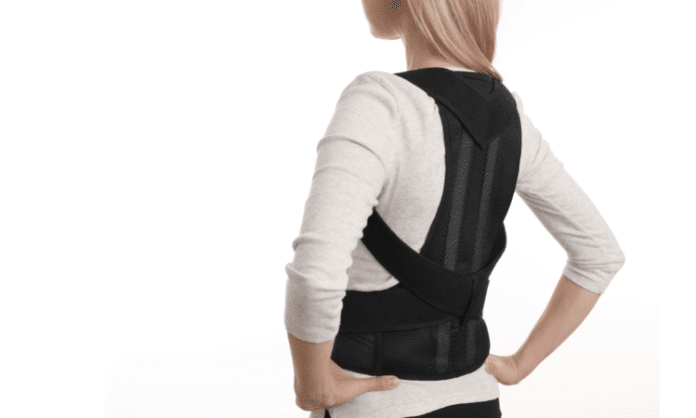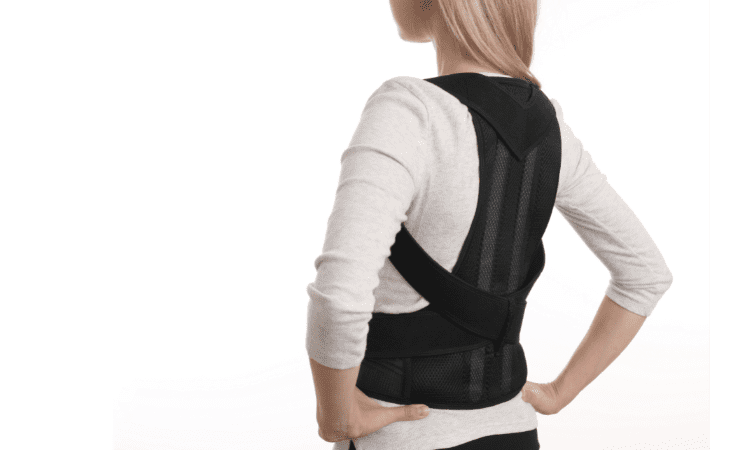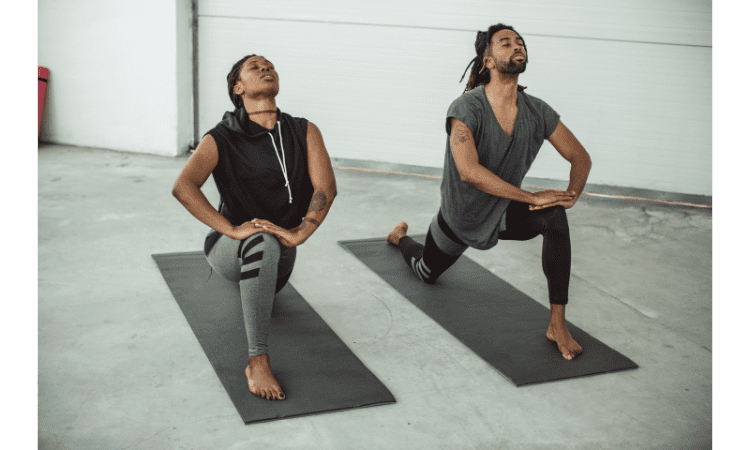
You’ve probably heard some variation of “sit up straight” or “stop slouching” millions of times in your life, whether it was from your parents, a spouse or significant other, or maybe an employer during a performance review. What you might not have known is that these comments are actually based on fact!
The way we sit and stand affects our health and wellness in ways we tend to overlook, which is why so many doctors and physical therapists recommend that people invest in posture correctors for pain relief, especially for those who spend long hours at a desk. This post will help you understand the difference between good posture vs bad posture and how to improve your posture with exercises such as sitting upright, standing up tall, and using a posture corrector. You’ll also learn about the benefits of using these products properly (and why they’re not just for old folks).
What is posture

Posture is the position of your body, how you hold it, and how you move. It has many benefits: improving health, appearance, confidence, and athletic performance.
- Health: Good posture can help prevent back pain and other problems due to poor circulation.
- Appearance: Proper posture makes you look taller and thinner by elongating your neck and spine. This may make others think that you have a better job than they do!
- Confidence: When someone sees someone with good posture walking into a room with confidence (and pride), they will think that person has something important to say or something special about themself—this gives them more credibility when speaking about whatever topic is at hand because people feel like this person must know what he’s talking about if he carries himself so well!
good posture vs bad posture

The first step in knowing if you have good posture is to look at yourself in a mirror and find the point where your ears, shoulders, hips, and ankles line up. If your ability to achieve this posture is limited by any of the following factors:
- A lack of strength or flexibility
- An injury that prevents proper joint movement
- Weakness in core muscles (such as the abdominals) that support the spine
Good posture for sitting

When sitting, you should keep your back straight and your knees and hips at 90 degrees. Your hands should be on the desk in front of you, or if that is not possible, keep them in your lap. You may also want to take breaks from sitting every hour or so by standing up and moving around for 10 minutes.
How to straighten your back

- For a proper posture, it is important to keep your back straight. This means that you should be able to draw a line from the top of your head through your spine and all the way down to the ground.
- To start getting into this position, begin by holding your shoulders back. This will help keep the rest of your body aligned properly and ensure that all pressure is being placed on your feet rather than on other parts of the body such as knees, hips, or lower back area.
- Next up is breathing deeply! Breathing helps relax muscles throughout our bodies so we can take a better posture.
- The last step is bending slightly at both knees while keeping them together with feet flat against the floor.
How to improve your posture

- Sit up straight.
- Keep your shoulders back and down.
- Keep your head up but not so high that it hurts to look down. This will help you keep the chest open and the stomach in.
- Make sure that your knees are under your hips; if they’re not, move them there so that they are! This makes it easier to keep the feet flat on the floor (and keeps those pesky lower back muscles from being used).
Also make sure that when sitting on a chair or couch, there is a footrest in front of you so that you can set both feet on it at once (unless you have one leg shorter than the other). If this isn’t possible for whatever reason, then just sit cross-legged with one leg folded under yourself as much as possible (which will also help keep things balanced). If this still doesn’t work out for some reason—say maybe because you’re too tall for such an arrangement—then try using an exercise ball instead; these come in different sizes so finding one that fits well shouldn’t be too difficult! It’s important not only because it helps strengthen core muscles but also helps improve balance while working toward improving posture long term!
What is a posture corrector and does it work?

A posture corrector is a type of elastic waistband that pulls your shoulders back, forcing you to stand up straight. How does it work? The device pulls on the shoulders, which naturally causes a change in spinal curvature and thus adjusts your posture. The device itself is made with an elastic belt or straps that can be adjusted to fit any size person. It’s recommended that you wear one for four hours at a time, but some people wear one all day long.
Does it work? It depends on what kind of posture issues you have and how severe they are; some people may need additional treatments like physical therapy or chiropractic care in addition to using a posture corrector. Doctors recommend using one if it helps with pain related to poor alignments like headaches or back pain. Still, they also warn against wearing them too much as this could cause other health problems like numbness in limbs (which is actually caused by sitting in one position for too long).
The best way to know if this product will help improve your kid’s health is by speaking with their doctor beforehand; he/she can tell whether or not the benefits outweigh any risks associated with wearing such devices regularly (which includes skin irritation due to prolonged contact).
Can I wear a posture corrector all day?

A posture corrector is used to gently pull your shoulders back and keep them in a neutral position. This helps to reduce pain caused by slouching and hunching forward with bad posture. However, if you’re wearing a posture corrector all day, it won’t be effective because your body will get used to having the device there and eventually stop responding.
You should only wear your posture corrector for several hours at a time when you’re sitting or standing still (e.g., at work). If possible, alternate between wearing the device during work hours and taking breaks from wearing it during non-work hours so that you can maintain its effectiveness over time. While results may vary depending on how long it takes for your body to adjust itself back into alignment with good posture habits (which varies from person to person), most people experience positive effects within two weeks of using their posture correctors consistently throughout the day.
Do doctors recommend posture correctors?

Doctors recommend posture correctors to prevent back pain, neck pain, and shoulder pain.
If you are experiencing these types of discomfort, a doctor or physical therapist might prescribe a posture corrector.
The purpose of wearing a garment such as the Recline Right Posture Corrector is to remind you to sit up straight so that your spine does not suffer unnecessary strain on a regular basis.
Use a posture corrector to get into the habit of sitting up straight and having good posture
Posture correctors are designed to help you sit up straight and maintain good posture, but they don’t guarantee perfect posture. You still need to be conscious of what you’re doing throughout the day—and use a posture corrector as a tool to remind yourself how to sit up straight when you need it most.
posture exercises

To improve your posture, you’ll want to make sure that you are doing the right exercises. Here are some examples of good posture exercises:
- Sit up straight with your back against the backrest of a chair, and place one hand on each knee. While keeping your forearms parallel to each other, raise both arms to shoulder height. Hold for three seconds before lowering them again. Repeat this exercise 10 times per day for two weeks or until it becomes easy for you.
- Stand in front of a mirror with your feet together and look down at where they make contact with the floor (or at eye level if there isn’t enough space). Roll up onto the balls of your toes as far as possible without lifting them completely off from where they touch down; hold this position for five seconds before rolling back down onto flat feet again. Repeat this exercise 10 times per day for two weeks or until it becomes easy for you
Conclusion
If you’ve been experiencing back pain and want to learn more about posture exercises that might help, consult to a good doctor to get proper guidance. We can discuss your options and help you determine what might work best for you.











